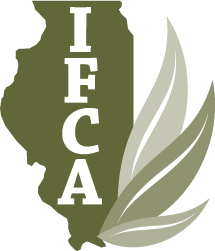Historic rains ravaged Illinois farms during planting season. Now the race is on to harvest corn and soybeans before it’s too late.
Mark Tuttle cuts straight to the point when describing the field and weather conditions he has faced this year on his farm in southern DeKalb County.
“In one word, I’d say: ‘miserable,’” said Tuttle, who grows corn, soybeans and wheat on about 1,000 acres near Somonauk, about 25 miles southwest of Aurora.
Historic flooding and heavy spring rains that left wide swaths of farmland muddy, soaked or underwater left many Illinois farmers scrambling to plant their crops after they waited for waterlogged fields to dry. In a state where agriculture remains an essential part of the economy, the wild swings in weather and repeated rounds of drenching rains during the spring — and another batch in September — have put millions of acres of crops at risk.
The soggy weather damaged crops and, in some cases, left entire fields submerged for weeks, unable to be planted at all. Many farmers were unable to plant corn and soybeans until June.
Click Here to read more.
“In one word, I’d say: ‘miserable,’” said Tuttle, who grows corn, soybeans and wheat on about 1,000 acres near Somonauk, about 25 miles southwest of Aurora.
Historic flooding and heavy spring rains that left wide swaths of farmland muddy, soaked or underwater left many Illinois farmers scrambling to plant their crops after they waited for waterlogged fields to dry. In a state where agriculture remains an essential part of the economy, the wild swings in weather and repeated rounds of drenching rains during the spring — and another batch in September — have put millions of acres of crops at risk.
The soggy weather damaged crops and, in some cases, left entire fields submerged for weeks, unable to be planted at all. Many farmers were unable to plant corn and soybeans until June.
Click Here to read more.
